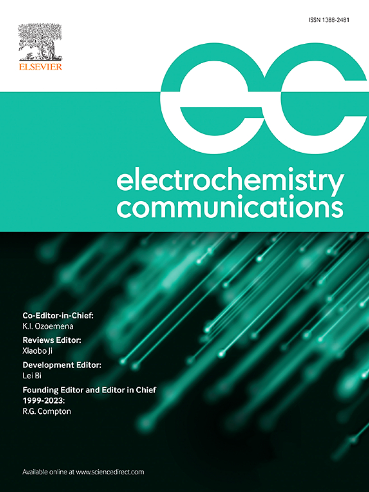Developing PI@PANI composites for aqueous zinc-ion batteries
IF 4.2
3区 工程技术
Q2 ELECTROCHEMISTRY
引用次数: 0
Abstract
Polyimide electrode materials exhibit good electrochemical performance; however, their low conductivity limits their application. To address this issue, this study synthesized polyaniline-polyimide (PI@PANI) composites through chemical oxidative polymerization and solvothermal methods. The effects of the polyaniline ratio on the morphology, specific surface area, molecular weight, and electrochemical performance of the composites were investigated. The PI@PANI maintained its characteristic morphology, and when the polyaniline ratio was higher, the specific surface area of the composites increased along with the increase of high molecular weight polymers, while thermal stability slightly decreased. As an electrode material in zinc half-cells, Zn//PI@PANI (PI@PANI-2, NTCDA: ANI = 1:1) showed good cycling performance and rate capability. At a current density of 250 mA/g, after 400 cycles, the capacity retention reached as high as 90 %. Additionally, during full cell tests, the PI@PANI// MnO2 full cell maintained a high capacity retention of 86 % after 500 cycles at a current density of 200 mA/g. These results indicate that the PI@PANI composites have significant application potential in the field of electrochemical energy storage, providing theoretical guidance and experimental evidence for further optimizing the composition and structure of the composites to enhance their electrochemical performance.
开发PI@PANI水性锌离子电池复合材料
聚酰亚胺电极材料具有良好的电化学性能;然而,它们的低导电性限制了它们的应用。为了解决这一问题,本研究通过化学氧化聚合和溶剂热法合成了聚苯胺-聚酰亚胺(PI@PANI)复合材料。考察了聚苯胺配比对复合材料形貌、比表面积、分子量和电化学性能的影响。PI@PANI保持了其特有的形态,当聚苯胺比例较高时,复合材料的比表面积随着高分子量聚合物的增加而增加,而热稳定性略有下降。作为锌半电池的电极材料,Zn//PI@PANI (PI@PANI-2, NTCDA: ANI = 1:1)具有良好的循环性能和倍率性能。在250 mA/g电流密度下,经过400次循环,容量保持率高达90%。此外,在全电池测试中,PI@PANI// MnO2全电池在200 mA/g电流密度下循环500次后保持86%的高容量保持率。结果表明,PI@PANI复合材料在电化学储能领域具有显著的应用潜力,为进一步优化复合材料的组成和结构以提高其电化学性能提供了理论指导和实验依据。
本文章由计算机程序翻译,如有差异,请以英文原文为准。
求助全文
约1分钟内获得全文
求助全文
来源期刊

Electrochemistry Communications
工程技术-电化学
CiteScore
8.50
自引率
3.70%
发文量
160
审稿时长
1.2 months
期刊介绍:
Electrochemistry Communications is an open access journal providing fast dissemination of short communications, full communications and mini reviews covering the whole field of electrochemistry which merit urgent publication. Short communications are limited to a maximum of 20,000 characters (including spaces) while full communications and mini reviews are limited to 25,000 characters (including spaces). Supplementary information is permitted for full communications and mini reviews but not for short communications. We aim to be the fastest journal in electrochemistry for these types of papers.
 求助内容:
求助内容: 应助结果提醒方式:
应助结果提醒方式:


